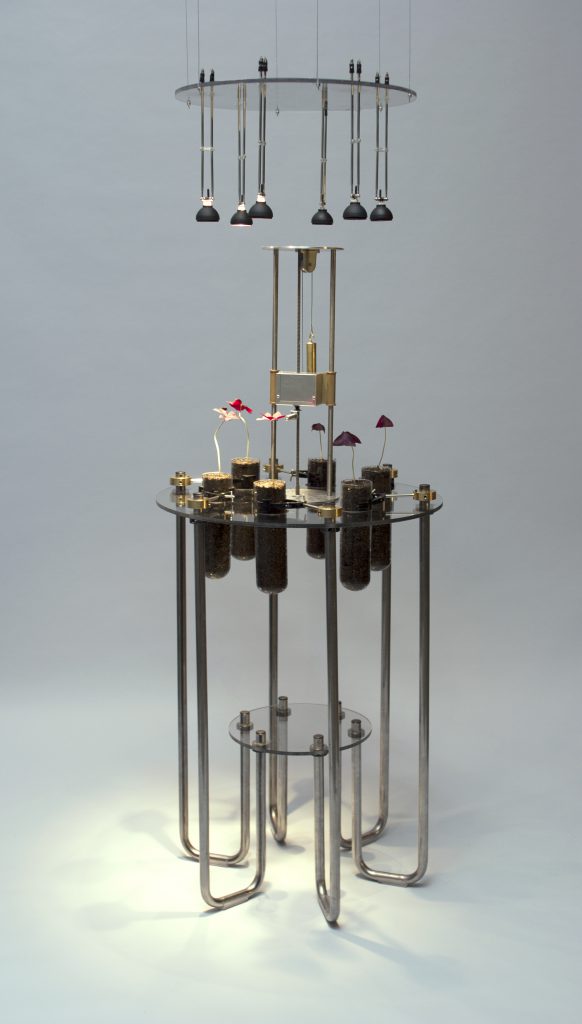The Search for Luminosity” (2005-7), is a two-part project consisting of the same feedback system; the first system is counter balancing in behavior and the second is self-reinforcing. After doing some research into circadian rhythms, I found that many life forms contain endogenous rhythms. Meaning here that it is not always the presence of a sun that triggers a plant to lift its leaves in preparation for photosynthesis, but rather a programmed memory of sorts that the plant has of its previous day’s routine. This movement happens for fairly quantifiable biological reasons, but nonetheless the fact remains that the plant does not need that initial sunlight every day to wake itself up. Therefore, in the second iteration of the project, I decided to make the cycle self-reinforcing. In darkness, as soon as the sensor recognizes the plant has began to lift its leaves, it provokes its above light to turn on, thereby putting the power of the sun rising in control of the movements of the plant. The plant’s dramatic gesture of waking and sleeping becomes the signaling observed by the technology that mediates the message to the acting sun in the plant’s universe.
Another difference in “The Search for Luminosity (part two)” is the use of multiple plants. In this instantiation the final format for viewing is not a video but rather an autonomous biotechnological installation. By having multiple plants the need for time-lapse video is done away with, as the viewer instantly sees the plant in several periods of its cycle from fully awake to fully asleep. Lastly, this particular iteration contains a custom-built scanner that develops a visualization of the plant’s form, thereby allowing the plant to grow and move within the scanner’s field of view while still allowing the scanner to track its position. This information is then transmitted to a data projection that provokes a sense of satellite imagery and creates a dramatic shifting of scale as we look on at this fragile plant able to communicate across a vast landscape.

